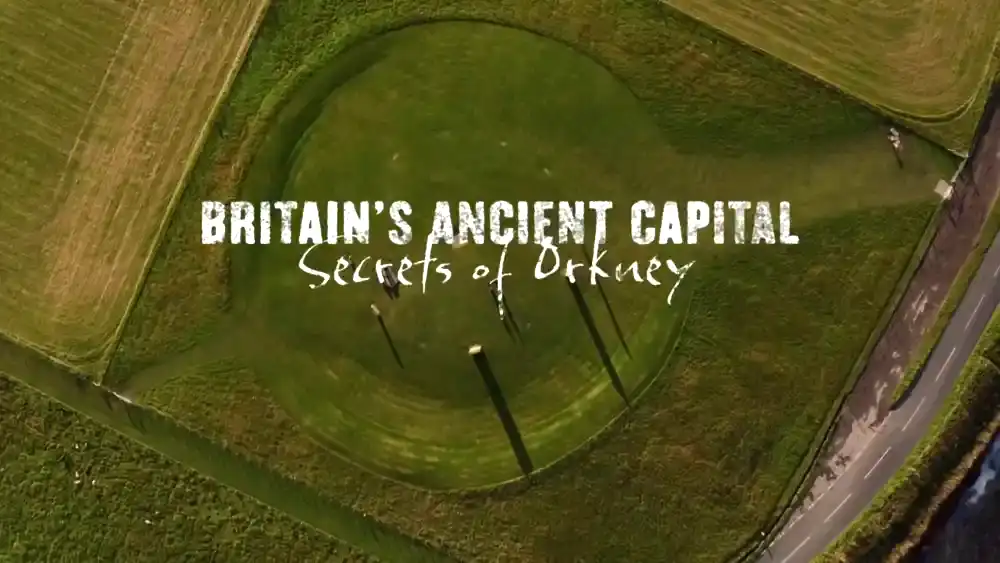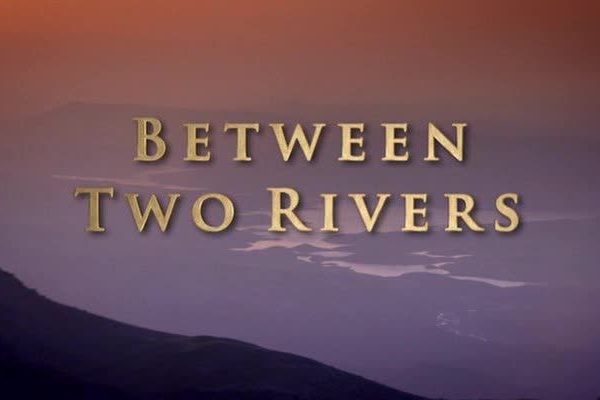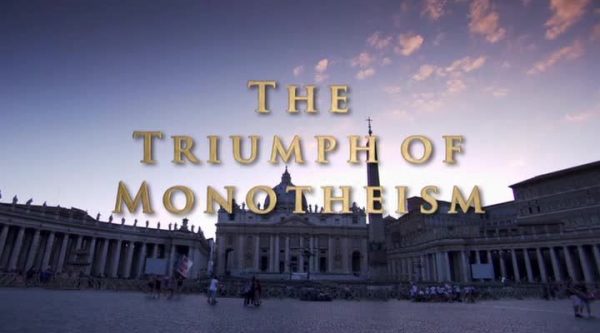Britain’s Ancient Capital: Secrets of Orkney episode 1 – Nestled seven miles off the enchanting Scottish coastline, secluded and shielded by the formidable Pentland Firth—a tumultuous tidal race renowned as Europe’s swiftest flow—Orkney is often perceived as a place of remoteness. However, recent astounding discoveries have effortlessly overturned the existing stone age map of Britain. Rather than a mere outpost perched on the fringes of civilization, compelling evidence now suggests an extraordinary and captivating theory: Orkney served as the cultural epicenter of our ancient world, the very birthplace of the stone circle cult that eventually reached its zenith in the enigmatic marvel known as Stonehenge.
Embarking on a captivating journey, this riveting three-part series unites an illustrious cast of explorers and experts. Accompanied by a multitude of archaeologists hailing from every corner of the globe, Neil Oliver, Chris Packham, Andy Torbet, and Dr. Shini Somara converge on this captivating archipelago to unearth its secrets, one excavation at a time. In what promises to be an awe-inspiring spectacle, they plunge headfirst into one of Europe’s most ambitious and extensive archaeological endeavors.
With relentless curiosity, Chris Packham delves deep into the mysteries concealed within the DNA of Orkney’s extraordinary and singular vole. Neil Oliver, on the other hand, immerses himself in the exploration of Orkney’s labyrinthine tombs and majestic monuments, unlocking the captivating tales they silently hold. Dr. Shini Somara fearlessly ventures into the realm of experimentation, seeking to unravel the enigma of how the ingenious Orcadians ingeniously maneuvered colossal stone blocks across treacherous terrain. And not to be outdone, archaeological daredevil Andy Torbet embarks on a daring ascent up Orkney’s most formidable sea-stack, poised to unlock the untold narrative woven into the island’s unparalleled geological tapestry.
Prepare to be captivated as this extraordinary expedition unfolds, shedding new light on the timeless allure and profound significance of Orkney—an ancient realm that stood as a beacon of cultural brilliance and a crucible of ancient wisdom. Brace yourself for an unforgettable voyage, where the past and present intertwine, giving rise to a profound appreciation for the indelible mark left by our ancestors upon the very fabric of our world.
Britain’s Ancient Capital: Secrets of Orkney episode 1
Orkney, a group of islands off the northeastern coast of Scotland, is a treasure trove of ancient history. Its tombs and monuments are testament to a rich and fascinating prehistoric culture. This post delves into the fascinating world of Orkney’s prehistoric heritage and explores the significance of its most iconic ancient structures.
The Rich Prehistory of Orkney
The Orkney archipelago holds an esteemed position in Scotland’s prehistoric narrative. The history of human occupation on these islands dates back to Scotland’s Early Historic Period, around 600 AD, with some records even mentioning Orkney during the Roman invasions of Scotland. The islands bear numerous prehistoric remains, particularly from the Neolithic period, that have survived remarkably well due to a combination of the area’s sandstone bedrock, wind-blown sands, lack of industrialization, and minimal ploughing.
The excavation history in Orkney is a tale of gradual discovery and understanding. Formal excavations first began in the late 18th century, evolving from folklore-inspired investigations to the modern archaeological science that exists today.
Exploring Orkney’s Remarkable Tombs and Monuments
The Magnificent Maeshowe is a prime example of Neolithic craftsmanship. Built around 2800 BC, it is one of Orkney’s largest tombs and a part of the UNESCO World Heritage Site, “Heart of Neolithic Orkney”. The complexity of Maeshowe is awe-inspiring, with a complex of passages and chambers constructed from large slabs of flagstone, some weighing up to 30 tons.
The Ring of Brodgar, a late Neolithic or early Bronze Age stone ring, is another iconic site in Orkney. Assumed to have been erected between 2500 BC and 2000 BC, it is the third largest stone circle in the British Isles, and a testament to the architectural prowess of its builders. The Standing Stones of Stenness, while less numerous than the stones at Brodgar, stand as imposing monoliths in the landscape. These stones have an air of mystery, representing a time long past and a people whose way of life we are still working to understand.
The Cultural Impact and Modern Interpretation of Orkney’s Prehistoric Structures
The intersection of folklore and archaeology in Orkney is intriguing. Tales passed down through generations have often guided archaeologists to new discoveries, linking the past and present in a unique way. These stories, combined with archaeological research, help us understand the people who once inhabited these islands and built these remarkable structures.
Today, Orkney’s prehistoric monuments play a significant role in contemporary culture. They attract visitors from around the world, who come to marvel at these ancient structures and ponder the lives of the people who built them. These monuments are more than just stone; they’re a window into our shared human past.
In conclusion, Orkney’s tombs and monuments stand as enduring reminders of our prehistoric ancestors. Their architectural sophistication, archaeological significance, and cultural impact continue to fascinate scholars and visitors alike, offering us a glimpse into an age long past, but not forgotten.
FAQ:
1. What is the significance of Orkney in Scotland’s prehistoric narrative?
– Orkney holds an esteemed position in Scotland’s prehistoric narrative, with a history of human occupation dating back to Scotland’s Early Historic Period. Some records even mention Orkney during the Roman invasions of Scotland.
2. What are some remarkable tombs and monuments in Orkney?
– Orkney is home to magnificent structures such as Maeshowe, a prime example of Neolithic craftsmanship. Built around 2800 BC, Maeshowe is one of Orkney’s largest tombs, featuring complex passages and chambers constructed from large slabs of flagstone. The Ring of Brodgar, a stone ring believed to have been erected between 2500 BC and 2000 BC, is another iconic site showcasing the architectural prowess of its builders. The Standing Stones of Stenness also stand as imposing monoliths, representing a time long past and a culture we are still striving to understand.
3. What is the cultural impact of Orkney’s prehistoric structures?
– Orkney’s prehistoric monuments play a significant role in contemporary culture. They attract visitors from around the world who come to marvel at these ancient structures and contemplate the lives of the people who built them. These monuments serve as more than just stone; they provide a window into our shared human past.
4. How have folklore and archaeology intersected in Orkney?
– The intersection of folklore and archaeology in Orkney is intriguing. Tales passed down through generations have often guided archaeologists to new discoveries, creating a unique connection between the past and present. These stories, combined with archaeological research, contribute to our understanding of the people who once inhabited the islands and constructed these remarkable structures.
5. What do Orkney’s tombs and monuments symbolize?
– Orkney’s tombs and monuments stand as enduring reminders of our prehistoric ancestors. Their architectural sophistication, archaeological significance, and cultural impact continue to fascinate scholars and visitors alike. These structures offer us a glimpse into an age long past, evoking a sense of wonder and appreciation for the ingenuity and cultural brilliance of those who came before us.




